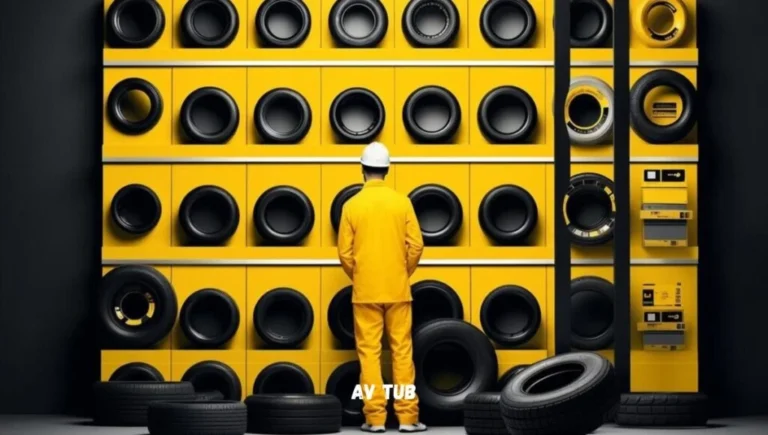The world of entertainment has undergone numerous transformations, largely influenced by technological advancements. From analog to digital, the shift in mediums and platforms has revolutionized how content is produced, distributed, and consumed. One term that may not immediately come to mind but holds relevance in niche corners of the entertainment sector is “AV tub.” Though it may sound unfamiliar, the concept behind AV tub touches on a significant aspect of how audio-visual (AV) media is archived, shared, and interacted with. This article delves into the history, utility, and broader implications of AV tub within the entertainment and digital media landscape.
Defining AV Tub: A Niche Concept in AV Technology
“AV” refers to audio-visual, a term commonly associated with media that combines both sound and video elements. This can include films, television shows, video clips, and live-streaming content. The “tub” part of the term seems to allude to the idea of a container or platform—something that can hold or house AV content.
AV tub, then, can be interpreted as a digital repository or platform where AV content is stored, managed, and shared. Much like video-sharing platforms or storage sites that specialize in hosting media files, an AV tub serves as a metaphorical “container” for a vast array of digital media. The specifics of an AV tub would vary depending on the context, but generally, it would function as an archive or service geared toward offering users access to audio-visual files for either private use or public consumption.
A Historical Perspective: How AV Tub Fits into the Broader AV Industry
The AV industry dates back to the early 20th century when silent films were the predominant form of entertainment. The introduction of sound in films during the late 1920s marked a major shift in audio-visual media, leading to the “talkies” era. From then on, innovations such as color television, VHS tapes, DVDs, and the internet have continuously shaped the AV industry.
With the advent of the internet in the late 20th century, a paradigm shift occurred in how AV content was distributed and consumed. No longer were audiences limited to physical media or broadcast channels. Video-sharing platforms like YouTube, Dailymotion, and Vimeo democratized access to video content, while Netflix and Hulu brought about the age of on-demand streaming services. Within this evolving media ecosystem, niche platforms that specialize in hosting or distributing particular types of content emerged, and this is where the concept of an AV tub comes into play.
Types of AV Tubs: Platforms and Services that House AV Content
While the term “AV tub” is not universally recognized, it represents a broad range of services and platforms that specialize in storing and sharing AV content. There are several key categories within this broader spectrum:
- Cloud-Based Storage Solutions: Services like Google Drive, Dropbox, and iCloud offer cloud-based storage solutions where users can upload, share, and manage AV content. These services act as personal AV tubs, where users can access media files from any device connected to the internet. They provide storage space for personal videos, audio recordings, and multimedia presentations.
- Video Sharing and Streaming Platforms: Platforms like YouTube, Twitch, and Vimeo are arguably the most well-known “AV tubs” in the digital age. These platforms allow users to upload their video and audio content to be streamed by a global audience. The power of these platforms lies in their ability to act as repositories for a virtually limitless amount of content. Users can upload anything from home videos to professionally produced shows.
- Specialized Media Libraries: There are niche AV tubs that cater to specific genres or types of content. For instance, libraries or archives such as the British Film Institute (BFI) or the Prelinger Archives are dedicated to preserving historical AV content. These archives serve as valuable resources for researchers, filmmakers, and historians interested in exploring older films, TV shows, and audio recordings.
- Content Creation Platforms: Services like TikTok and Instagram have become prominent AV tubs that house user-generated short-form content. While these platforms primarily cater to mobile content creators, they represent a new wave of AV sharing. Users upload brief clips, which are often combined with music or sound effects, creating a unique form of AV interaction.
The Role of AV Tubs in Digital Media Management
One of the most critical roles of an AV tub is its ability to store, manage, and distribute AV content efficiently. For both amateur creators and professional media producers, managing vast libraries of media files can be overwhelming. AV tubs streamline this process by offering tools for categorization, tagging, and archiving. Some AV tubs go even further by integrating editing tools, collaboration features, and analytics that provide creators with insights into how their content is consumed.
For companies and organizations, AV tubs are a vital asset. Corporations that handle extensive amounts of AV content—such as marketing firms, news agencies, and film studios—rely on AV tubs to store raw footage, completed projects, and media assets. These platforms enable teams to collaborate, share files, and produce content more efficiently.
Monetization and the Commercialization of AV Tubs
In recent years, AV tubs have become a lucrative part of the entertainment economy. YouTube, for example, allows content creators to monetize their videos through ad revenue. Similarly, platforms like Patreon, OnlyFans, and Twitch offer creators additional ways to earn money through subscriptions, donations, and direct fan engagement.
The commercialization of AV content on these platforms has fundamentally changed the way media is produced. It has lowered the barrier for entry, allowing independent creators to reach audiences without the backing of traditional media companies. AV tubs have thus become critical in the rise of independent media production, enabling creators to profit from their work while maintaining control over their content.
Challenges and Ethical Considerations
While AV tubs offer many benefits, they also present certain challenges. One issue is content moderation and copyright infringement. Platforms that host large volumes of user-generated content often struggle to regulate what gets uploaded, leading to concerns over the illegal sharing of copyrighted materials or inappropriate content.
Moreover, with the increasing commercialization of AV platforms, questions about ownership and creator rights have become more prominent. Many platforms operate under terms of service that grant them extensive rights to the content uploaded by users. Creators must navigate these terms carefully to ensure that they retain ownership of their intellectual property.
The Future of AV Tubs: Where Do We Go from Here?
As technology continues to evolve, the concept of AV tubs will likely grow and expand into new forms. Virtual and augmented reality (VR/AR) are already pushing the boundaries of AV content, and new platforms will emerge to support these immersive formats. Furthermore, advances in artificial intelligence may revolutionize how AV content is categorized and recommended, making it easier for users to find the media they want.
Additionally, with the rise of decentralized web technologies like blockchain, AV tubs may evolve to give creators more control over their content and how it is distributed. Blockchain-based platforms could offer a new level of transparency and security in media distribution, allowing creators to set their terms for content ownership, licensing, and monetization.
Conclusion
Though “AV tub” may not yet be a widely recognized term, its significance as a concept is undeniable. Whether it’s cloud storage, video-sharing platforms, or specialized archives, AV tubs represent the digital repositories that house much of the world’s audio-visual content. As technology continues to shape the media landscape, these platforms will only become more integral to how we create, consume, and share AV content.

